As anyone who has used the Athenaze textbooks will know, we follow the adventures of Dikaiopolis and his family as they work on the farm. Who can forget the encounter with the wolf, the trip to the city for the Dionysia, and (spoiler alert) the catastrophe which befalls poor Philip. Without giving too much away, Dikaiopolis and Philip travel to Epidaurus, seeking healing for the boy.
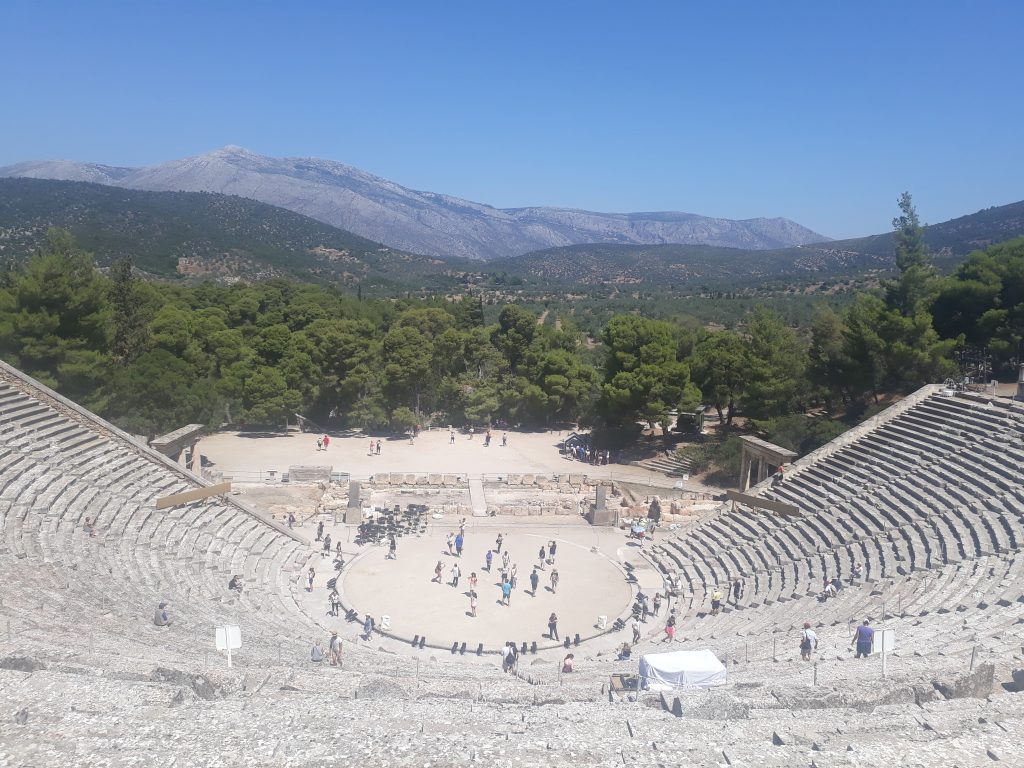
Why Epidaurus? You might be familiar with the great theatre at Epidaurus in the Peloponnese (above). In July 2020, Aeschylus’ Persians was performed here, live-streamed all over the world. Epidaurus is one of those magical places. It’s not possible to visit only once, and on each return visit, it never loses its mystery and fascination. Visitors enjoy taking their turn to speak in the orchestra, to witness the remarkable acoustics of the theatre. But the archaeological site at Epidaurus consists of not just the theatre, but a stadium and a sanctuary to Asclepius.
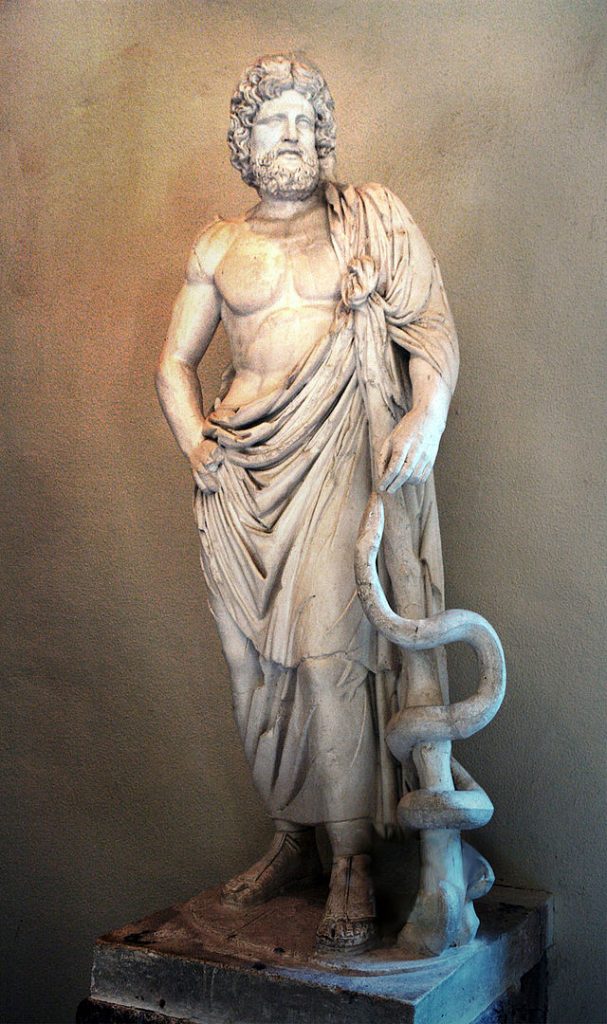
Asclepius was the son of the god Apollo and the mortal Coronis. His mother died in childbirth and he was raised by the centaur Cheiron. The centaur instructed the young Asclepius in the art of healing, and indeed he became so skilled that he was able to return the living from the dead. The other gods became jealous of Asclepius’ abilities and the story goes that he was killed by Zeus at the request of Hades, who feared Asclepius was stealing the dead from him, a crime against the natural order.
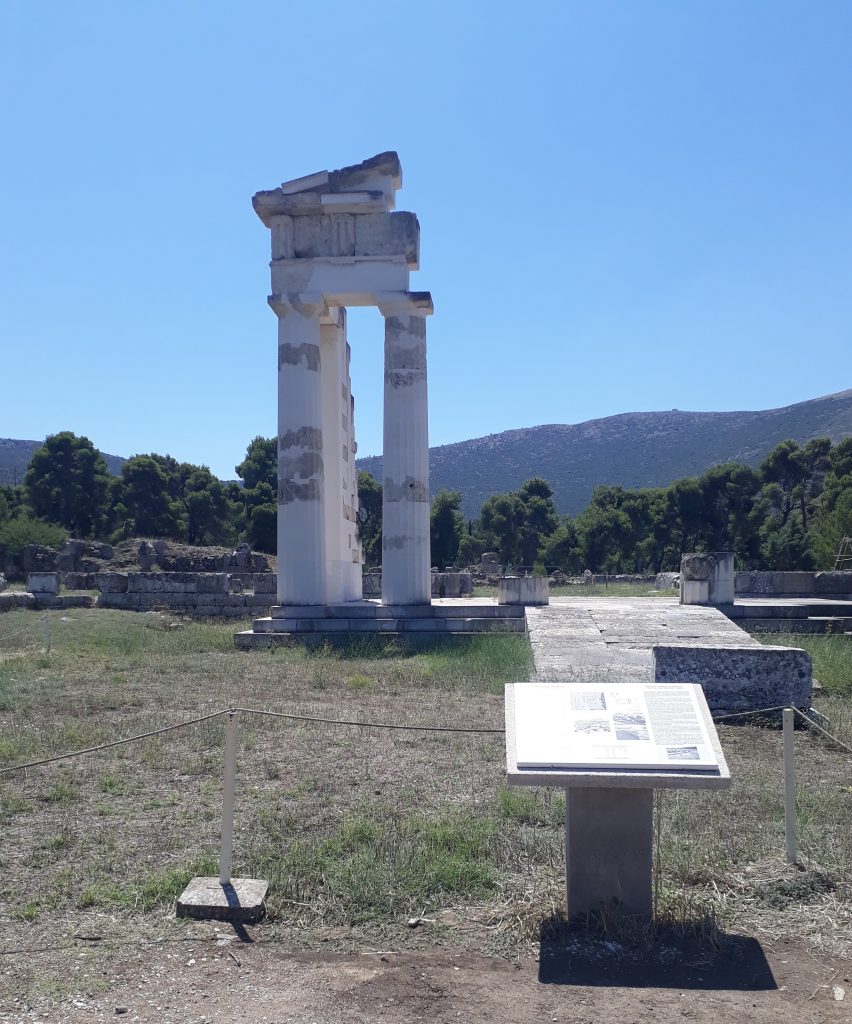
The sanctuary of Asclepius at Epidaurus is the earliest organised hospital complex and there is evidence that ceremonial healing practices have taken place on the site since Apollo was worshipped there in the 8th century BC followed by Asclepius in the 6th century BC. The remains of the buildings which can be seen today date to the 4th century BC. Stemming from the myth of Asclepius’ great healing powers, pilgrims flocked to the temple.
There were two steps a patient had to follow to be treated in the asclepeion. The first of which is the catharsis or purification stage. The patient is bathed and might have been required to eat a specific diet for a number of days. Patients would be taken to a dormitory called the abaton, where they would spend the night, possibly falling asleep with the help of hallucinogenic drugs. As they slept, they were visited by Asclepius or his daughters Hygeia and Panacea. These visions were thought to reveal the nature of the disease and whether the patient was likely to recover. The vision would give patients instructions for treating their illness when they woke. The patient would recount their dream to a temple priest, who would then prescribe a treatment based on their interpretation. The facilities at these asclepeia favoured holistic treatments and the cure for patients was often a visit to the baths or gymnasium.
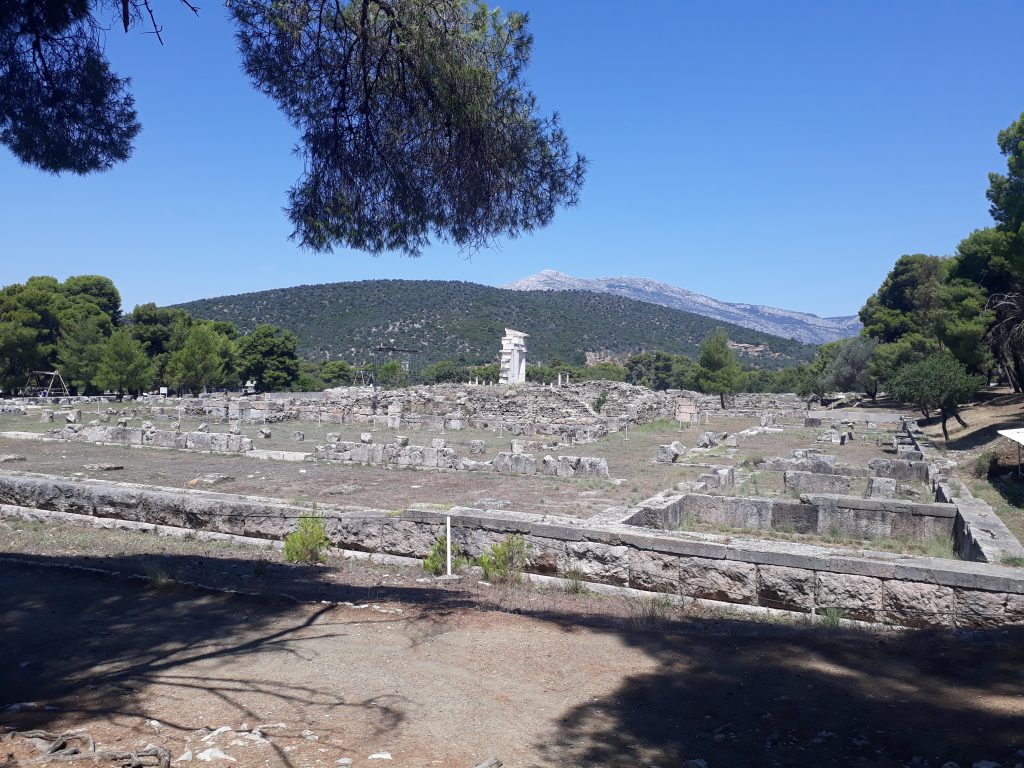
In the story we read about Philip in Athenaze chapters 17-18, Asclepius appears in a dream holding a staff around which curled the sacred snakes. When Philip awakes, he is well again, and is expected to pay for a sacrifice and make a dedication to the god. Surviving dedications can be seen in the Epidaurus musem, inscribed on tablets and depicting the part of the body which was healed.
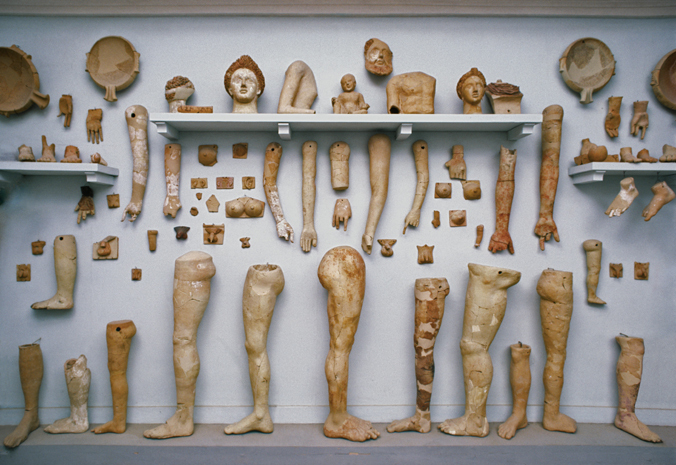
In the Asclepeion at Epidaurus, three large marble boards dated to 350 BC preserve the names and case histories of about 70 patients who came to the temple with a medical complaint and received a cure. Surgical cures were listed, such as the opening of an abdominal abscess. While the patient was asleep, anaesthetised by soporific substances, such procedures could indeed have taken place.
Asclepius is mentioned in Homer’s Iliad as the father of the Podaleirios and Machaon, both healers themselves:
Ἀσκληπιοῦ δύο παῖδε,
ἰητῆρ᾿ ἀγαθώ, Ποδαλείριος ἠδὲ Μαχάω
(2.731-2).
And when Menelaus is wounded, Talthybius told to fetch Machaon “son of Asclepius and an incomparable healer”
Μαχάονα δεῦρο κάλεσσον,
φῶτ᾿ Ἀσκληπιοῦ υἱόν, ἀμύμονος ἰητῆρος
(4.193-4).
Pindar’s Pythian Ode 3 celebrates Asclepius. Written for Hieron of Syracuse, winner of the single-horse race, it does not commemorate a recent victory, rather it is written about Hieron’s illness.
τοὺς μὲν ὦν, ὅσσοι μόλον αὐτοφύτων
ἑλκέων ξυνάονες, ἢ πολιῷ χαλκῷ μέλη τετρωμένοι
ἢ χερμάδι τηλεβόλῳ,
ἢ θερινῷ πυρὶ περθόμενοι δέμας ἢ
χειμῶνι, λύσαις ἄλλον ἀλλοίων ἀχέων
ἔξαγεν, τοὺς μὲν μαλακαῖς ἐπαοιδαῖς ἀμφέπων,
τοὺς δὲ προσανέα πίνοντας, ἢ γυίοις περάπτων πάντοθεν
φάρμακα, τοὺς δὲ τομαῖς ἔστασεν ὀρθούς.
Now all who came to him afflicted with natural sores
or with limbs wounded by gray bronze
or by a far-flung stone,
or with bodies wracked by summer fever
or winter chill, he relieved of their various ills and
restored them; some he tended with calming incantations,
while others drank soothing potions,or he applied remedies to all parts
of their bodies; still others he raised up with surgery.
Pindar, Pythian 3.47-53
Over 300 sanctuaries to Asclepius have been discovered throughout Greece, the most famous being at Epidaurus, Cos, Athens, Corinth and Pergamon. The asclepeion located on the south slopes of the Acropolis in Athens dates to around 420 BC.

It is believed that Hippocrates received his medical training at an asclepeion on the island of Cos. And before becoming the personal physician to Marcus Aurelius, Galen studied at the asclepeion at Pergamon.
The staff of Asclepius with the snake wrapped around it is a common symbol of medicine and the medical profession. In Europe, it features in the logos of the British Medical Association, the British Small Animal Veterinary Association, the Irish Medical Council, and emergency medical services in France, Italy, the Netherlands, the UK and Portugal, to name only a few.

Globally, the World Health Organisation features the staff of Asclepius, while there are many other organisations worldwide which use the symbol.


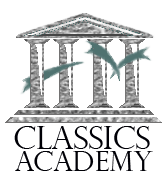
Loved the article. I have visited Epidaurus as well as the asclepeion in Athens. It brought back wonderful memories. I was an Ancient Studies major as an undergrad and truly miss those studies. At some point I hope to brush up on my Latin (which seems totally gone from my memory) and possibly learn a bit of Greek. Most of all though I wish to revisit such places.
Thank You for the post
Thank you Robin!